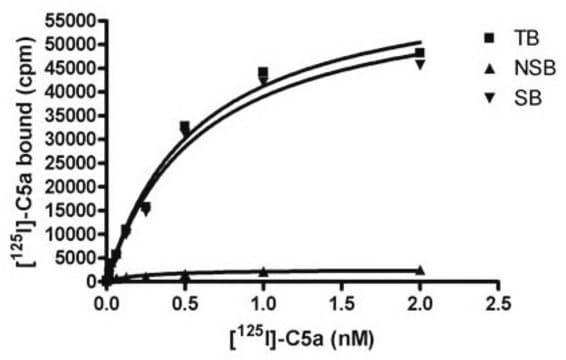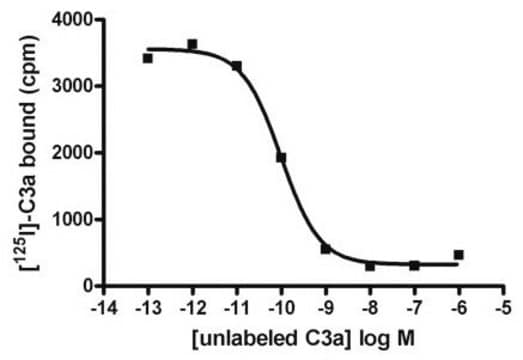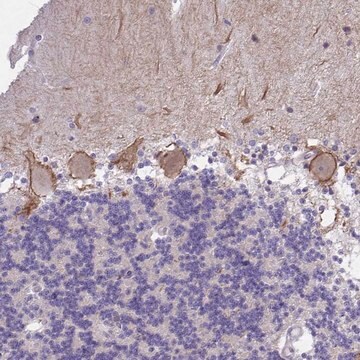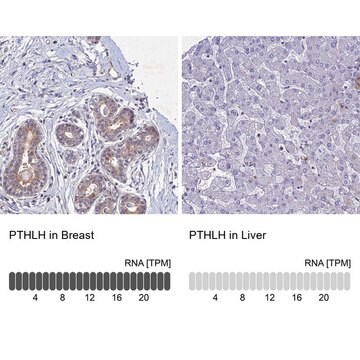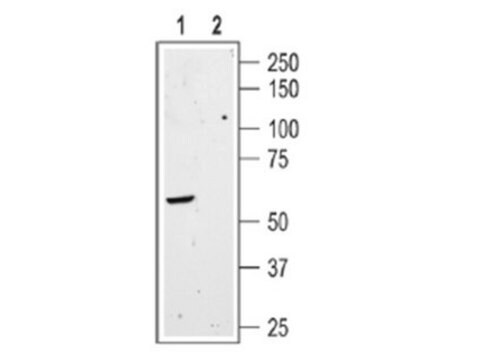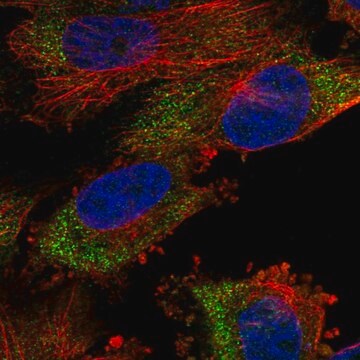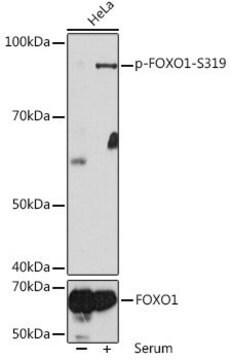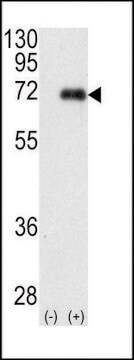HTS016RTA
Ready-to-Assay C3a Anaphylotoxin Receptor Frozen Cells
Human
About This Item
Produits recommandés
Description générale
C3a, along with C4a and C5a, is a 77 amino acid anaphylotoxin generated by proteolytic cleavage during activation of the complement pathway (Ember and Hugli, 1997). The anaphylotoxins strongly promote inflammation by recruiting leukocytes, particularly basophils, eosinophils, neutrophils and monocyte (Martin et al., 1997). The proinflammatory properties of C3a are mediated by interaction between the peptide and a 7-TM G-protein coupled receptor, C3aR (Crass et al., 1996). Genetic and pharmacological inhibition of C3a/C3aR interaction indicates an important role for C3aR in allergic asthma (Humbles et al., 2000; Drouin et al., 2002). C3a/C3aR also enhances the effect of SDF-1 in promoting retention of haematopoietic stem/progenitor cells within the bone marrow (Rataiczak et al., 2004). Millipore′s cloned human C3a-expressing cell line is made in the Chem-1 host, which supports high levels of recombinant C3a expression on the cell surface and contains high levels of the promiscuous G protein Gα15 to couple the receptor to the calcium signaling pathway. Thus, the cell line is an ideal tool for screening for agonists, antagonists, and modulators at C3a.
Description de la lignée cellulaire
- GPCR Cell Lines
- Host cells: Chem-1
Application
Actions biochimiques/physiologiques
- GPCR Class: A
- Protein Target: C3aR
- Target Sub-Family: Anaphylotoxin
Composants
Fifty (50) mL of Media Component.
Clause de non-responsabilité
This product contains genetically modified organisms (GMO).
Within the EU GMOs are regulated by Directives 2001/18/EC and 2009/41/EC of the European Parliament and of the Council and their national implementation in the member States respectively.
Code de la classe de stockage
10 - Combustible liquids
Classe de danger pour l'eau (WGK)
WGK 1
Point d'éclair (°F)
Not applicable
Point d'éclair (°C)
Not applicable
Certificats d'analyse (COA)
Recherchez un Certificats d'analyse (COA) en saisissant le numéro de lot du produit. Les numéros de lot figurent sur l'étiquette du produit après les mots "Lot" ou "Batch".
Déjà en possession de ce produit ?
Retrouvez la documentation relative aux produits que vous avez récemment achetés dans la Bibliothèque de documents.
Active Filters
Notre équipe de scientifiques dispose d'une expérience dans tous les secteurs de la recherche, notamment en sciences de la vie, science des matériaux, synthèse chimique, chromatographie, analyse et dans de nombreux autres domaines..
Contacter notre Service technique